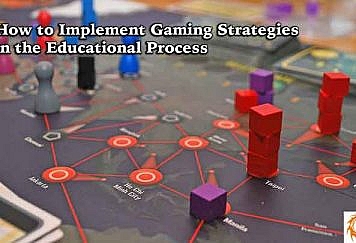The COVID-19 pandemic has forced many students across the country to move from classrooms to virtual learning, relying on computers to stay in touch with teachers and do their homework. This resulted in a longer viewing time, making students more vulnerable to eye problems associated with digital eye exposure.
Blue Light Exposure
All digital devices emit blue, low-wavelength, high-energy light that can damage your eyes over time. According to a new report from United Healthcare Vision Screen Time, the most common symptoms of over-exposure to blue light are dry eyes, blurred vision, headaches, sleep disturbances, and reduced productivity. The report, co-developed with digital tools shows that some doctors are particularly concerned about children because their eyes continue to grow and absorb more blue light than adults, increasing the risk of injury. This increased risk of injury can ultimately be minimized with the help of blue light glasses. To prevent eye strain and get a better night’s sleep, get a pair of blue light-filtering glasses from SmartBuyGlasses and use them when you’re using the computer.
Blue Light Blocking Technology
Blue Light blocking technology helps reduce the effect of harmful rays from the screens of digital devices without reducing visibility. If your children already have access to blue light blocking technology, you should look to donate to the Child Eye Care programs. These programs focus on children’s eye health and support the well-being of young people who are spending more time on distance learning.
Screen Time Rules Develop
The AAP advises against media use by children aged 18 to 24 months, save for video conferencing. If you introduce digital media for children aged 18 to 24 months, ensure the quality is high and avoid the use of single media. Limit the screen time for children aged 2 to 5 to 1 hour a day for high quality content. Try to balance the time of the screen with other hobbies like cooking, drawing and playing outside. Please check our toy and game list for this blog. The MayoClinic provides some excellent recommendations for older children.
Recall Blink
We often forget to blink or blink inefficiently when using a digital device or reading. Blink completely, 10 times every 20 minutes and wash your eyelash and lids with warm water and soap like the baby shampoo or specific foams such as OCUSOFT to prevent blurred vision, burning or itchy eyes. Children today display more indicators of drought (burning, itching, tears, redness) and should be addressed early.
Modern Studies
Some modern studies reveal that many Americans are falling victim to eye strain due to over usage of digital devices, which is problematic.
Public school teachers should promote and encourage blue light blocking technology, especially for students who are still learning remotely. Parents wish that their children should have access to blue light-blocking technology as soon as possible.
Many digital devices and computer monitors emit blue light, which can increase digital eye strain. Here’s how: When blue light enters your eyes, it spreads. So your eyes have to work very hard to focus on the diffused light.
Precautions
As distance learning continues for many students, here are some tips to reduce digital eye strain:
- Computer screens should be kept at a minimum distance of 25 inches from your eyes. Consider using larger and font size screens where possible.
- Follow the 20-20 rule: After every twenty minutes, take a break of twenty seconds and look at something about twenty feet away.
- As a parent, it should be your responsibility scheduling regular eye exams for children to promote healthy vision. The first comprehensive eye examination should be performed on a child between 6 and 12 months and at least twice before the first year.
- Reduce the device’s screen brightness to reduce blue light exposure, especially during evening hours. Since LED and energy-saving light bulbs also emit blue light, it is a good idea to reduce them at home or work if you can.
- Use artificial tears to cool your eyes when they are dry.
- Place a humidifier in your room where you usually use a computer or other digital device.
- If you wear contact lenses, pause your glasses for your eyes.
- Get regular eye exams. You may need to wear different glasses while working on the computer.
Follow TechStrange for more Technology, Business and Digital Marketing News.





